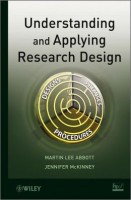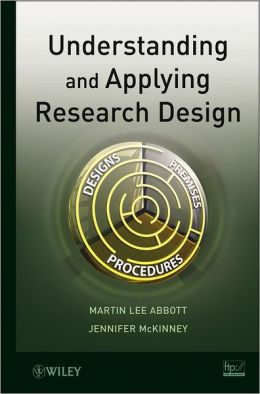 Authors: Martin Lee Abbott and Jennifer McKinney
Authors: Martin Lee Abbott and Jennifer McKinney
Publisher: Wiley – 425 pages
Book Review by: Krishnan Ramamurthy
The main thesis of this book is that good research design and solid analytical skills are both essential to getting answers to important questions in social science.
The authors – Martin Lee Abbott, PhD and Jennifer McKinney, PhD, professor and associate professor respectively, of sociology at Seattle Pacific University – have been involved in research design and statistical analysis for some time.
Dr. Abbott is the author of two books: The Program Evaluation Prism: Using Statistical Methods to Discover Patterns and Understanding Educational Statistics Using Microsoft Excel and SPSS, both from Wiley.
Dr. McKinney teaches research design. She also consults, makes presentations and publishes articles on this subject.
The aim of this book is to bridge research design with statistical analysis.
To fulfill this purpose, this book focuses primarily on three areas : premises, procedures and design of social science research, outlined in the 18 chapters within the first three parts of this four-part book.
Part IV covers statistics and data management. Units A and B within the Statistical Procedures section deal respectively with writing the statistical research summary, and examining the nature of inferential statistics.
The data management section in Part IV contains Units A and B which deal respectively with: use and functions of SPSS; and using SPSS to recode for T Test. In addition, Part IV has a Unit C which deals with descriptive statistics, and statistical procedures with Z scores.
These are the specific functions of Part I, II and III of this book
- Premises of Research – introduces the research process and the capabilities of the Microsoft program SPSS, with coverage of ethics, Empirical Generalization, Chi Square and Contingency Table Analysis
- Procedures of Research – explores key quantitative methods in research design including measurement, correlation, regression and causation
III. Designs of Research – outlines various design frameworks with discussion of
survey research, aggregate research and experiments
In its aim of integrating design and statistics, this book is useful to those students and professionals who want to learn the processes of :
- Posing
- Testing
- Interpreting
research questions in the social sciences. They analyze, using SPSS software, actual data from the real world presented by the authors.
Chapter 1 of Part I is a must-read. It points out the differences between the “Duh” science and the “Huh” science in the interesting article How Do We Know What We Know?
“Duh” science, especially as part of the social sciences, as opposed to the physical sciences, simply tests the obvious, for example that driving ability is compromised with people who have Alzheimer’s disease. Duh, but of course!
On the other hand, “huh” science gives us detailed findings from research that are quite different from what we assumed. For example, numerous studies have found that people with higher levels of education make more income. We assumed that in the first place, and studies verified our assumption.
We assume and we know for sure, based on studies, that a person without a high school diploma makes less money than a high school graduate. Also, that college grads generally earn more than those who completed high school. And advanced degree holders such as college professors – those with MAs, and PhDs – earn even more than college grads.
But this assumption and confirmation holds true only to a certain extent.
It has also been shown in studies that business owners or high-level executives who have low (or lower) levels of education make substantially more money than college professors with MA or PhD degrees.
So “huh” science enables us to dispel our assumptions or discover things that had not entered our minds, things that make us say “huh!”
Within this article is a paragraph entitled Common Sense versus Science. When using our common sense, we view the world through our own lenses (biases) but science provides a baseline for all people to view the world from. It is a common meeting ground where biases have no role or influence.
This is a good book on designing good research studies and using statistical and analytical tools to measure their results accurately.






